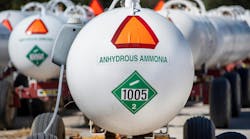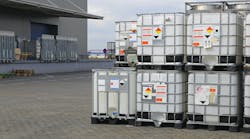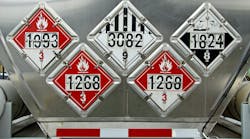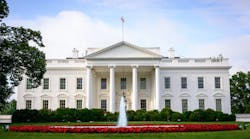President Barack Obama’s call for a new round of federal mandates to raise the fuel economy for medium- and heavy-duty trucks brought a mixed reaction from industry and environmental groups, ranging from healthy skepticism to almost giddy exuberance.
Speaking February 18 at the Safeway Distribution Center in Upper Marlboro MD, Obama said he was directing the Environmental Protection Agency and the Department of Transportation to set the next phase of fuel efficiency and greenhouse gas standards for medium- and heavy-duty trucks and issue rules by March 2016. Under this timeline, the agencies would have to publish a notice of proposed rulemaking by March 2015.
“Heavy-duty trucks account for just 4% of all vehicles on the road, but they are responsible for about 20% of carbon pollution in the transportation sector,” Obama said. “Trucks like these are responsible for about 20% of our on-road fuel consumption. Because they haul about 70% of all domestic freight, every mile we gain in fuel economy is worth thousands of dollars of savings every year.
“That’s why we’re investing in research to get more fuel economy gains. And thanks to a partnership between industry and my administration, the (Cummins/Peterbilt SuperTruck) behind me was able to achieve a 75% improvement in fuel economy over the last year. To help our businesses and manufacturers meet the new goals, we’re offering tax credits—both for companies that manufacture heavy-duty alternative fuel vehicles and those that build fuel infrastructure so that trucks running on biodiesel or natural gas or hybrid electric technology, they’ll have more places to fill up.”
Obama said yet again that he wants to fund the fueling alternatives through punitive actions against the US oil industry. He continues to call on Congress to repeal the so-called annual tax subsidies that go to the oil and gas industry. He wants to use at least $2 billion of those subsidies to fund technologies that offer alternatives to petroleum-based fuels. The proposed program seems eerily similar to the one that put roughly half a billion dollars of federal funds into the Solindra solar-power boondoggle.
Responding to the Obama proposals, the American Trucking Associations expressed qualified support the goal of improved fuel efficiency of large trucks, while pressing the Obama Administration to proceed cautiously with the setting of new standards.
“We stood shoulder-to-shoulder with the President and his administration in 2011 when the historic first fuel efficiency standards were set for heavy-duty vehicles,” said ATA President and CEO Bill Graves. “As we begin this new round of standards, ATA hopes the administration will set forth a path that is both based on the best science and research available and economically achievable.
“Fuel is one of our industry’s largest expenses, so it makes sense that as an industry we would support proposals to use less of it. However, we should make sure that new rules don’t conflict with safety or other environmental regulations, nor should they force specific types of technology onto the market before they are fully tested and ready.”
The Owner-Operator Independent Drivers Association (OOIDA) and its members are warning that the Obama administration’s proposed fuel-economy standards for medium- and heavy-duty trucks could put the cost of new trucks out of reach for many of America’s hard-working professional truckers.
“Shock and awe may be the best way to describe what’s happening to the vast majority in trucking with these proposed regulations,” said Todd Spencer, OOIDA executive vice-president. “Each year for the past 10, more and more truckers are squeezed out of the option to buy new equipment because of ever increasing prices due to government requirements that are long on promises but way short on performance. We’re not talking about some 60-watt light bulbs here where poor performance or premature failure is a minor inconvenience. Large trucks are vital tools, essential to our economy and our way of life, and most truck operators are small-business people just getting by.”
The Diesel Technology Forum took a more optimistic view, saying that Obama’s announcement sets up the next challenge for clean diesel technology to further improve fuel efficiency and reduce greenhouse gas emissions from commercial vehicles including medium and heavy duty trucks and buses.
Allen Schaeffer, executive director of the Forum, said: “Engine and vehicle makers have all met the first set of Phase I standards for higher fuel efficiency in the current 2014 products that are now certified and for sale. Driven by customers fuel efficiency demands, OEMs made improvements which enabled them to meet requirements of Phase 1. Currently, 2.86 million of the 8.8 million heavy-duty trucks in the United States (32.5%) meet the first-generation clean diesel standards for model year 2007 engines. Of all trucks on the road today, 1.29 million (14.7%) meet the even more stringent clean diesel standards for 2010 and later model year engines.
“This shift to new clean diesel technology is delivering significant societal benefits today. In 2012, the fleet of clean diesel trucks reduced emissions of NOx by one million tons and reduced particulate matter by 27,000 tonnes. This is the same amount of NOx reduction that would result from removing 87 million light duty cars and trucks from the road for one year, and the same amount of particulate matter reduction as removing 225 million cars and trucks for one year. As the fleet of older Class 3-8 medium- and heavy-duty trucks are replaced each year with new clean diesel trucks, these emissions benefits will continue to increase, while fuel consumption decreases.








